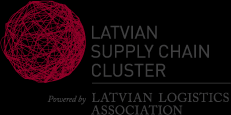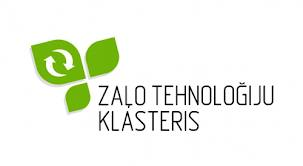The concept of cluster was developed and promoted by Prof. Michael Porter of the Harvard Business School (HBS) in his book "The Competitive Advantage of Nations" (Porter, 1990). The most widely used cluster definition by Professor of the Harvard Business School M.Porter describes clusters as groups of interconnected firms, suppliers, related industries and institutions that arise in certain locations. These clusters are geographical concentration of interconnected enterprises, specialised suppliers, service providers and associated institutions in particular field. Specialized regional clusters have been arising in locations with enough resources and competence, where enterprises can fully explore competitive advantages over other places (Porter, M.E., (1998) “On Competition”, Harvard Business School Press, Boston, MA, USA).
Successful examples of applying the cluster model are visible in the sea ports of Rotterdam, Hamburg, Copenhagen and others. Most sea ports are naturally concentrated businesses, where all operations are in the same place, including production, packaging, logistics, commercial and legal services, financial and insurance services, etc. Business networking taking place in these ports facilitates the successful co-operation of enterprises thus helping to increase their competitiveness, as well as the competitiveness and recognition of their business location (ports).
The cluster initiatives can be characterized as collaborative activities by a group of enterprises, public sector entities, and other related institutions with the objective to improve the competitiveness of a group of interlinked economic activities in a specific geographic region. Opposite from clusters which can appear on the basis of concentration of economic activity or labor force, the cluster initiative is an organized effort with the main objective to promote the development and competitiveness of clusters.Usually, cluster initiatives act according to the triple helix model which involves businesses, universities&research institutions, and government support institutions.
The biggest data base of clusters and networks in Europe and a library on clusters can be found and downloaded free of charge from the Cluster Observatory home page.
CEBSR co-operate with clusters in Latvia and in the Baltic Sea Region and the North Sea Region. Our main co-operation partners are:
1.  Latvian Information technology (IT) cluster
Latvian Information technology (IT) cluster
2.  Latvian Supply Chain cluster
Latvian Supply Chain cluster
3.  Latvian Green technology cluster
Latvian Green technology cluster
Co-operation with clusters in the Baltic Sea Region and the North Sea Region  is taking place in the framework of the European Business Support Network. Please, contact us if you need an assistance looking for clusters and cooperation partners in Latvia, Baltic Sea Region or North Sea Region!
is taking place in the framework of the European Business Support Network. Please, contact us if you need an assistance looking for clusters and cooperation partners in Latvia, Baltic Sea Region or North Sea Region!
The concept of cluster was developed and promoted by Prof. Michael Porter of the Harvard Business School (HBS) in his book "The Competitive Advantage of Nations" (Porter, 1990). The most widely used cluster definition by Professor of the Harvard Business School M.Porter describes clusters as groups of interconnected firms, suppliers, related industries and institutions that arise in certain locations. These clusters are geographical concentration of interconnected enterprises, specialised suppliers, service providers and associated institutions in particular field. Specialized regional clusters have been arising in locations with enough resources and competence, where enterprises can fully explore competitive advantages over other places (Porter, M.E., (1998) “On Competition”, Harvard Business School Press, Boston, MA, USA).
Successful examples of applying the cluster model are visible in the sea ports of Rotterdam, Hamburg, Copenhagen and others. Most sea ports are naturally concentrated businesses, where all operations are in the same place, including production, packaging, logistics, commercial and legal services, financial and insurance services, etc. Business networking taking place in these ports facilitates the successful co-operation of enterprises thus helping to increase their competitiveness, as well as the competitiveness and recognition of their business location (ports).
The cluster initiatives can be characterized as collaborative activities by a group of enterprises, public sector entities, and other related institutions with the objective to improve the competitiveness of a group of interlinked economic activities in a specific geographic region. Opposite from clusters which can appear on the basis of concentration of economic activity or labor force, the cluster initiative is an organized effort with the main objective to promote the development and competitiveness of clusters.Usually, cluster initiatives act according to the triple helix model which involves businesses, universities&research institutions, and government support institutions.
The biggest data base of clusters and networks in Europe and a library on clusters can be found and downloaded free of charge
from the Cluster Observatory home page.
CEBSR co-operate with clusters in Latvia and in the Baltic Sea Region and the North Sea Region. Our main co-operation partners are:
1.  Latvian Information technology (IT) cluster
Latvian Information technology (IT) cluster
2.  Latvian Supply Chain cluster
Latvian Supply Chain cluster
3.  Latvian Green technology cluster
Latvian Green technology cluster
Co-operation with clusters in the Baltic Sea Region and the North Sea Region  is taking place in the framework of the European Business Support Network. Please, contact us if you need an assistance looking for clusters and cooperation partners in Latvia, Baltic Sea Region or North Sea Region!
is taking place in the framework of the European Business Support Network. Please, contact us if you need an assistance looking for clusters and cooperation partners in Latvia, Baltic Sea Region or North Sea Region!
